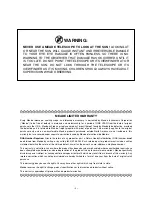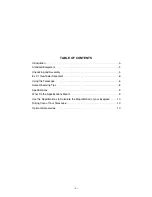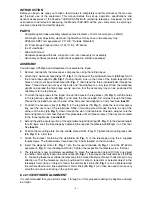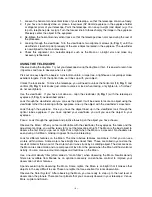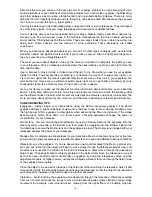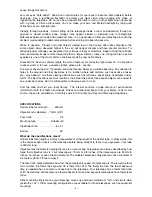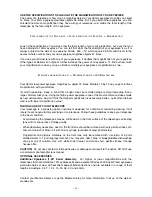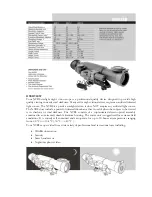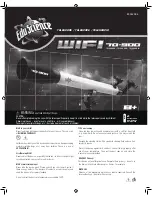
– 6 –
1.
Loosen the horizontal and vertical locks of your telescope, so that the telescope can move freely.
2.
If you have not already done so, place a low-power (SP 26mm) eyepiece in the eyepiece holder
or diagonal prism of your telescope. Point the telescope at an easy-to-sight land object (
e.g.,
the
top of a telephone pole or sign). Turn the focuser knob to focus sharply the image in the eyepiece.
Precisely center the object in the eyepiece.
3.
Re-tighten the horizontal and vertical locks so that the telescope does not move during the rest of
the procedure.
4.
Looking through the viewfinder. Turn the viewfinder’s two alignment screws (
6, Fig. 1
) until the
viewfinder’s crosshair point precisely at the same object centered in the eyepiece. The viewfinder
is now aligned to the main telescope.
6. Check this alignment on a celestial object, such as the Moon or a bright star, and make any
necessary refinements.
USING THE TELESCOPE
Observe during the daytime: Try out your telescope during the daytime at first. It is easier to learn how
it operates and how to observe when it is light.
Pick out an easy object to observe: A distant mountain, a large tree, a lighthouse or skyscraper make
excellent targets. Point the optical tube so it lines up with your object.
Unlock the lock knobs: To move the telescope, you will need to unlock the horizontal (
12, Fig. 1
) and
vertical (
13, Fig. 1
) lock knobs (just rotate to unlock or lock; when locking, only tighten to a “firm feel,”
do not overtighten).
Use the viewfinder: If you have not done so, align the viewfinder (
5, Fig. 1
) with the telescope’s
eyepiece (
1, Fig. 1
) as described earlier.
Look through the viewfinder until you can see the object. It will be easier to locate an object using the
viewfinder rather than locating with the eyepiece. Line up the object with the viewfinder’s crosshairs.
Look through the eyepiece: Once you have the object lined up in the viewfinder, look through the
optical tube’s eyepiece. If you have aligned your viewfinder, you will you see the object in your
eyepiece.
Focus: Look through the eyepiece and practice focusing on the object you have chosen.
Observe the Moon: When you feel comfortable with the viewfinder, the eyepieces, the locks and the
adjustment controls, you will be ready to try out the telescope at night. The Moon is the best object to
observe the first time you go out at night. Pick a night when the Moon is a crescent. No shadows are
seen during a full Moon, making it appear flat and uninteresting.
Look for different features on the Moon. The most obvious features are craters. In fact you can see
craters within craters. Some craters have bright lines about them. These are called rays and are the
result of material thrown out of the crater when it was struck by a colliding object. The dark areas on
the Moon are called maria and are composed of lava from the period when the Moon still had volcanic
activity. You can also see mountain ranges and fault lines on the Moon.
Use a neutral density filter (often called a “moon filter”) when observing the Moon. Neutral density
filters are available from Meade as an optional accessory and enhance contrast to improve your
observation of lunar features.
Spend several nights observing the Moon. Some nights, the Moon is so bright that it makes other
objects in the sky difficult to see. These are nights that are excellent for lunar observation.
Observe the Solar System: After observing the Moon, you are ready to step up to the next level of
observation, the planets. There are four planets that you can easily observe in your telescope: Venus,
Mars, Jupiter and Saturn.
Содержание 70AZ-ADS
Страница 11: ...11...
Страница 12: ...800 626 3233 www meade com 0705...


